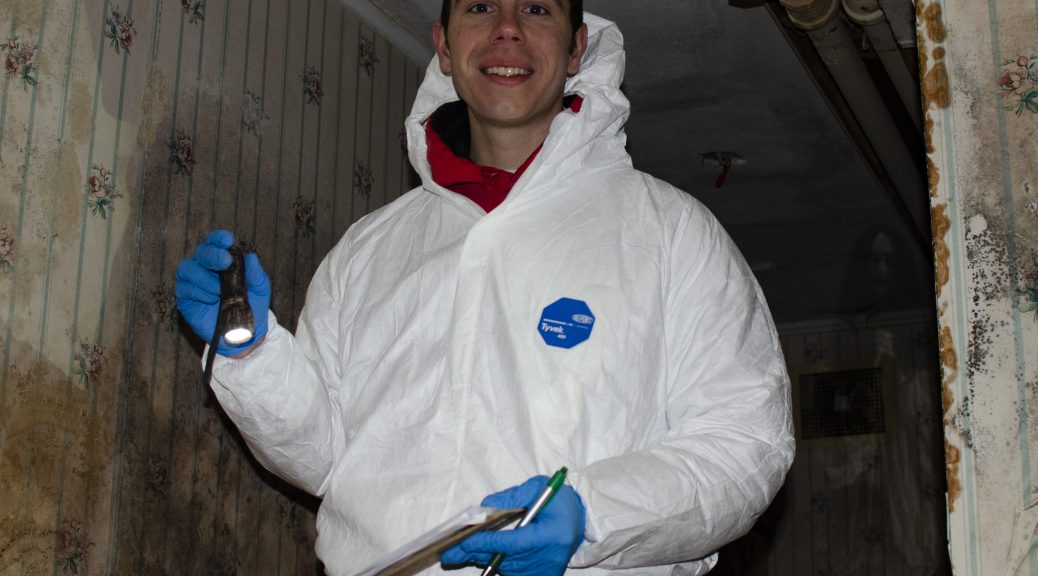In my last post I discussed the importance of content marketing for a business such as Phoenix Environmental. Since then I’ve worked with Jeff to explore ways we could accomplish this and other goals we generated in the Comprehensive Social Media Plan.
Earlier this week I worked on site with Phoenix Environmental for the first time. I worked at a location that was built in the 1820s and has since unfortunately fallen into decay. The likely location of America’s next Annabelle sighting, mold tags the walls like graffiti. Orange light pours in from stained glass windows and casts an eerie glow on an already terrifying setting. Light switches filled with several ounces of mercury line the walls. Yet, the sighting that most offended my eyes was the awful wallpaper the interior designer chose for the bathroom. Blue stripes… what was he thinking?!?

While on site I learned about asbestos and mold testing, how to take soil samples, and about how amazing I look in a hard hat. This first site assessment was mostly educational for me, although I had the chance to take some shots of the asbestos tests and soil samples! Pictures are a key part of content marketing and of showing our audience what it is that we do at Phoenix Environmental. Aren’t these photos bad for marketing, though? Aren’t my descriptions of the site as a horror house dangerous for Phoenix Environmental? Look at these pictures and realize that this is why you should call in environmental consultants like Phoenix Environmental as soon as possible! It’s better for us to find the problem before it becomes a problem, and that is the content marketing these pictures highlight.
One problem that makes taking photos (and writing posts like this one) especially difficult is that Jeff and his team highly value privacy, so all pictures and descriptions must strictly avoid giving away the location of a project. This is a creative challenge for marketing, but one I look forward to working around.
In the near future I’d like to join Jeff and his team on site and produce a video showing some of the work that Phoenix does, so be on the lookout for that!


